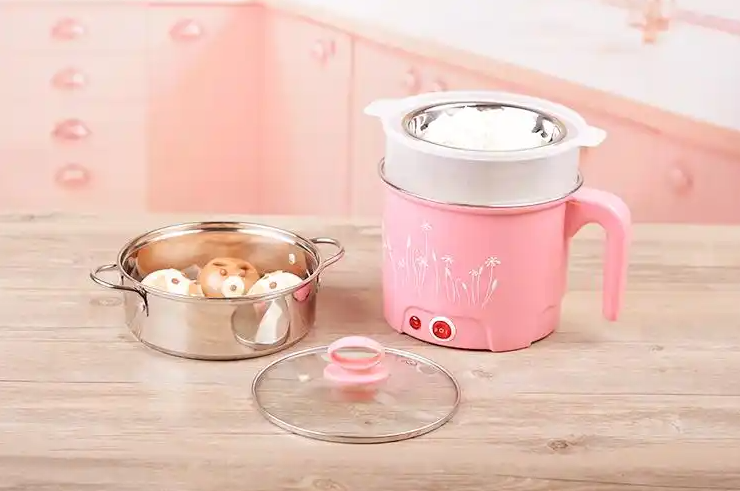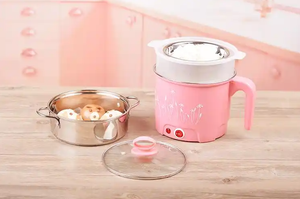
Inspection methods for electric heating kitchen appliances
Electric heating kitchen appliances (such as toasters, electric kettles, coffee makers, deep fryers, etc.) are indispensable tools in modern household cooking. The quality of these products directly affects user safety and usage experience. To ensure that such products meet international standards and customer requirements, systematic inspection and testing must be carried out. This article, based on the key quality control points in the factory inspection and testing process, elaborates on the inspection standards, testing methods, and key points of factory audits for electric heating kitchen appliances, providing practical references for purchasers, quality inspectors, and factory auditors.
I. Scope of Application
This standard is applicable to all types of electric kitchen appliances, including toasters, electric kettles, coffee makers, steamers, deep fryers, barbecue grills, and other household electrical products.
II. Main Inspection Standards and Basis
During the inspection process, the following international, national and industry standards must be referred to:
IEC 60335-1 "Safety of Household and Similar Electrical Appliances - Part 1: General Requirements"
Special standards for products such as IEC 60335-2-9 (toaster) and IEC 60335-2-15 (electric kettle)
North American standards such as UL 1026 (toaster) and UL 1082 (electric kettle)
GB 4706.1 and corresponding product special standards (Chinese national standard)
EN 62233 (Electromagnetic Field Radiation Related)
ISO 9001 Quality Management System (Factory Audit Requirements)
III. Key Inspection Items and Methods for Goods
1. Packaging and Labeling Inspection
Outer box and color box: Verify that the shipping marks, printed content, material, and packaging method comply with the requirements;
Instruction manual and label: Should be in the official language of the sales location, including contents such as installation, usage, cleaning, maintenance and safety warnings;
Component completeness: Check against the BOM list to ensure that all components are present and there are no omissions or errors.
Safety labels: such as "For Household Use Only", high-temperature warning signs (e.g. ⚠️ + "Hot Surface"), electrical warning phrases, etc., the font height must meet the standards (e.g. ≥ 2.4mm as required by UL);
Asphyxiation Warning: The packaging bag must have ventilation holes and warning labels.
2. Visual Inspection
Product Consistency: Comparison with the sample provided by the customer, the order specifications, and the color box images;
Surface quality: Free from dirt, scratches, shrinkage, cracks, burrs, etc.
Material and color: Meets design requirements; no color difference.
Nameplate and certification mark: Verify that the voltage, power, frequency, and certification mark (such as CE, UL) are consistent with the location of sale.
3. Structural Safety Inspection
Mechanical Structure: Tap and shake the product with your hands to check for any abnormal sounds or loose components;
Assembly clearance: No significant gap or poor fit;
Base stability: Use a gauge to check if the base is stable. Place it on a glass plate and test if it shakes.
Power cord and plug: The type and certification mark comply with the requirements of the sales location. The wire diameter and length meet the standards (for example, the power cord for an electric kettle should be no longer than 75 cm).
Safety device: The live parts and the heating components should be adequately protected to prevent users from coming into contact with them.
4. Function and Performance Testing
Switches and Buttons: All gears and buttons function properly, with a good tactile feel;
Input power: At the rated voltage, the power deviation complies with the standard (such as the EN standard: +5% / -10%);
Thermal oven performance:
The baking time and color uniformity meet the requirements.
The temperature rise of the accessible surfaces during the temperature rise test should be ≤ 90K.
Performance of the electric kettle:
The device automatically shuts off when the water boils, without any severe splashing or shaking.
During the dry-burning test, the thermal protector should activate, and there should be no fire or glue melting phenomena.
The capacity deviation is within ±5%.
Stability test: According to IEC or UL standards (such as the 15° tilt test for electric kettles), check whether it will tip over.
Charging machine test: Worked continuously for 5 cycles, and the product showed no abnormalities.
5. Electrical Safety Testing
High Voltage Test: According to IEC 60335-1, the test voltage is typically 1000V to 3000V, with no breakdown occurring within 1 minute;
Grounding resistance: Resistance of grounding path ≤ 0.1Ω;
Insulation resistance: ≥ 1 MΩ;
Power cord tensile strength test: Displacement does not exceed 2mm (according to UL standards, it should not exceed 1.6mm);
Nameplate durability: After being subjected to friction tests (with water, alcohol, and gasoline), it remains legible.
6. Special Tests
Fuse Breakage Test: After short-circuiting the temperature controller, the fuse should melt, without causing fire or severe damage;
Leakage current test: Meets the limit requirements;
Abnormal tests: such as dry burning, locked rotor, etc., are conducted to verify the effectiveness of the product's protection functions.
IV. Key Points of Factory Audit
During the factory audit process, it is necessary to comprehensively assess the quality management system and production capacity of the manufacturing enterprise:
Quality management system: Whether it has ISO 9001 certification and complete quality control documents;
Incoming material inspection (IQC): Records of the qualification inspection for key components (heating tubes, temperature controllers, power cords);
Production process control (IPQC):
Welding and injection molding process stability;
Assembly torque control and inspection records;
Calibration of testing equipment: Pressure resistance testers, power meters, temperature rise testing equipment, etc. need to be calibrated regularly;
Traceability system: Each item from raw materials to finished products should have a unique identifier, enabling full-process traceability.
Compliance and Certification: The product must obtain the certification of the target market (such as CE, UL), and comply with relevant regulations.
V. Common Defects and Judgement Criteria
Defect Category Concrete Manifestation Judgement Criteria
Severe Defect (Critical) Insulation failure, protection device malfunction, fire and smoke emission Reject outright, batch rejected as unqualified
Major Defect (Major) Power exceeding standard, excessive temperature rise, leakage and electric leakage AQL = 1.0
Minor Defect (Minor) Appearance defects, poor packaging, slight blurriness of labels AQL = 2.5
Sampling Scheme: Follow GB/T 2828.1 or ANSI Z1.4, generally using Level II.
Critical criterion: For serious defects, 0 is accepted and 1 is rejected. For major and minor defects, they are judged according to the AQL standard.
VI. Conclusion
Although electrical heating kitchen appliances are common household products, their electrical safety and performance stability directly affect user safety. By strictly implementing factory inspections, performance tests, and factory audits, the quality of the products can be comprehensively controlled. It is recommended that purchasers and quality inspection institutions focus on electrical safety, thermal performance, and structural reliability, and conduct tests using professional tools and international standards to ensure that the products meet design and usage requirements. Only by integrating quality control throughout the entire production and inspection process can we provide users with safe and reliable electrical heating kitchen solutions.
分享这个商品

Inspection methods for electric heating kitchen appliances
Electric heating kitchen appliances are indispensable tools in modern household cooking. The quality of these products directly affects the safety of users.
